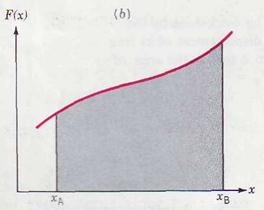
КАТЕГОРИИ:
Архитектура-(3434)Астрономия-(809)Биология-(7483)Биотехнологии-(1457)Военное дело-(14632)Высокие технологии-(1363)География-(913)Геология-(1438)Государство-(451)Демография-(1065)Дом-(47672)Журналистика и СМИ-(912)Изобретательство-(14524)Иностранные языки-(4268)Информатика-(17799)Искусство-(1338)История-(13644)Компьютеры-(11121)Косметика-(55)Кулинария-(373)Культура-(8427)Лингвистика-(374)Литература-(1642)Маркетинг-(23702)Математика-(16968)Машиностроение-(1700)Медицина-(12668)Менеджмент-(24684)Механика-(15423)Науковедение-(506)Образование-(11852)Охрана труда-(3308)Педагогика-(5571)Полиграфия-(1312)Политика-(7869)Право-(5454)Приборостроение-(1369)Программирование-(2801)Производство-(97182)Промышленность-(8706)Психология-(18388)Религия-(3217)Связь-(10668)Сельское хозяйство-(299)Социология-(6455)Спорт-(42831)Строительство-(4793)Торговля-(5050)Транспорт-(2929)Туризм-(1568)Физика-(3942)Философия-(17015)Финансы-(26596)Химия-(22929)Экология-(12095)Экономика-(9961)Электроника-(8441)Электротехника-(4623)Энергетика-(12629)Юриспруденция-(1492)Ядерная техника-(1748)
Work Done by a Spring
|
|
|
|
The relationship between the force F sp exerted by an ideal spring and its extension, or compression, was discovered in the seventeenth century by Robert Hooke and is therefore called Hooke's law:
Hooke's law F sp = − kx (4.3)

| 
|
| FIGURE 4.3 | FIGURE 4.4 |
where k, measured in N/m, is called the spring constant. The quantity x is the displacement of the free end of the spring from its equilibrium position—the point at which the spring has its natural length (see Fig. 4.3). The negative sign signifies that the force always opposes the extension (x > 0) or the compression (x < 0) of the spring. In other words, the force always tends to restore the system to its equilibrium position.
The work done by the spring in a displacement from x i to x f is the shaded area in Fig. 4.4, which is the difference in the areas of two triangles.
The work done by the spring when the displacement of the free end from its equilibrium position changes from x i to x f is
 (4.4)
(4.4)
This work is positive when the force and the displacement are in the same direction.
Work as an Integral of the Fx versus x Graph
When the force is an arbitrary function of position, we need the techniques of calculus to evaluate the work done by it. Figure 4.5 a shows Fx as some function of the position x. We begin by replacing the actual variation of the force by a series of small steps. The area under each segment of the curve is approximately equal to the area of a rectangle. The height of the rectangle is a constant value of force, and its width is a small displacement ∆ х. Thus, the n th step involves an amount of work  . The total work done is given approximately by the sum of the areas of the rectangles:
. The total work done is given approximately by the sum of the areas of the rectangles:

 
|
| FIGURE 4.5 |
As the size of the steps is reduced, the tops of the rectangles more closely trace the actual curve shown in Fig.4.5 b. In the limit ∆x→ 0, which is equivalent to letting the number of steps tend to infinity, the discrete sum is replaced by a continuous integral:

Thus, the work done by a force Fx from an initial point A to final point В is
 (4.5)
(4.5)
The sign of this work depends on Fx and the limits of the integral. Interchanging the limits of the integral is equivalent to reversing the direction of the displacement. Thus,
W B→A = − W A→B (4.6)
|
|
|
|
|
Дата добавления: 2014-01-05; Просмотров: 328; Нарушение авторских прав?; Мы поможем в написании вашей работы!